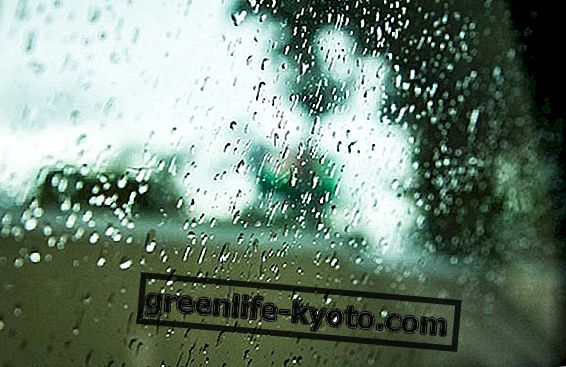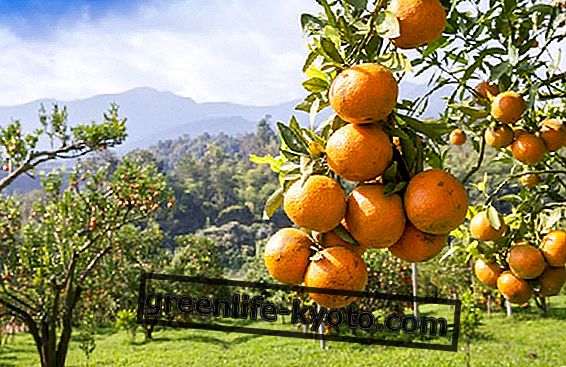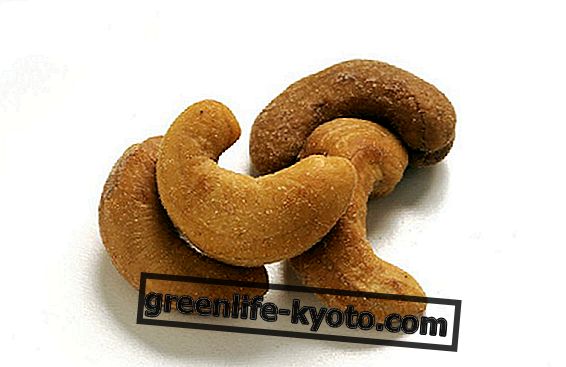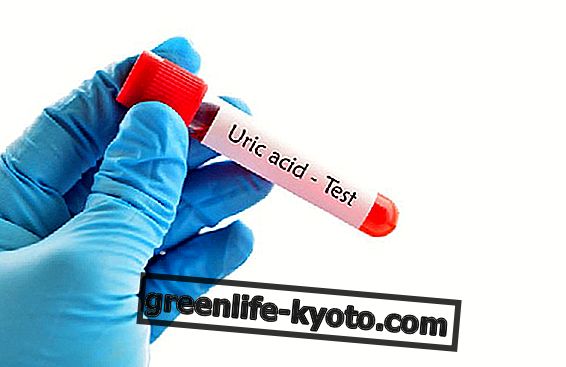Origins of Garcinia mangostana mangosteen The first news we receive from the beautiful island Moluccas Indonesia, but other areas are established where he was born or is successfully cultivated, India, Yanmar (formerly Burma), the Philippines, Sri Lanka and Thailand. In the Old World, in spite of various enthusiastic attempts of acclimatization, it was not able to obtain the orchards in production, this is because the Garcinia is a tree "ultratropicale", as it does not tolerate temperatures below 4 ° C and the seeds are killed by temperatures close at 7 ° C; It requires high humidity with constant precipitation equal to 127 mm annual; consequently, any attempt at acclimatization beyond 200 degrees north latitude has failed miserably. Garcinia mangostana is an arboreal species belonging to the botanical family of Guttiferae (which also includes the best-known St. John's wort) and its fruit is one of the most appreciated in tropical production. Mangosteen is known substantially uniform etymology in various countries of Europe: the French call it mangostaner or mangouste, the mangosteen English, in Spanish-speaking territories, not only in Europe, has called mangostan. The tree reaching 25 meters high and has a dark brown bark almost black; the evergreen leaves, which form a dense foliage, are oblong oval, dark green, with a short petiole base wing, while the young leaves appear pinkish in color (Fig. 6). The flowers (rapidly falling down) are masculine and hermaphroditic on the same tree and the first ones appear in groups of 3-9 at the tip of the branches, the latter grow individually; their color is particular: the petals are green dotted with red on the outside and a yellow to red inside. The fruit appears as a purplish apple, pericarp with seemingly quite substantial but that are unable to open easily, inside, enclosed by a thick peel, emerges a pulp divided into 4-8 lobes whitish similar in shape to the mandarin. In India and China the fruits are also used for herbal herbalist purposes, the peel is dried and powdered and used as a remedy for dysentery; It can also prepare an ointment for eczema and other skin rashes ppure a decoction against intestinal disorders, cystitis and gonorrhea. In addition, the peel of the fruit contains a metabolite defined beta-mangostin which has depressing effects on the central nervous system and induces increased blood pressure. In the Philippines it is also used a decoction of the leaves and bark as an antipyretic, the root decoction is used to regulate the menstrual flow and an extract of one bark, he said amibiasina, is very effective shows in the treatment of dysentery amebiasis, a parasitic disease caused by Entameba histolytica. Also Ayurvedic medicine has made extensive use of the pericarp of mangosteen against inflammation, diarrhea, cholera, dysentery (Pedraza-Chaverri et al .; 2008). To make it truly unique this fruit, however, is not even the taste delicious, but the high concentration of super antioxidant that contains a variety of metabolites called xanthones (Pedraza-Chaverri et al., 2008).
Xanthones, super antioxidants of Garcinia mangostana Xanthones, in English Xanthones, are biologically active molecules belonging to the group of phenols; Therefore, from a chemical point of view they have a base ring structure by a conjugated carbon atom with six double bonds which makes them highly stable. To date, they have been described in the literature about 1000 different xanthones. The mangosteen is the fruit that has the absolute highest number of xanthones, 46 discovered to date, of which 43 would be in the pericarp; xanthones are also in other plants, fungi and lichens. The biological activity of this class of compounds are associated with their tricyclic structure, but they vary depending on the nature and / or position of their constituents. Xanthones were isolated from the pericarp, the entire fruit, from the bark and leaves. Several studies have shown that xanthones obtained from the fruit of mangosteen possess remarkable biological properties. The α-, the β- and γ-mangostin, the garcinone And, the 8-deossigartanina and gartanina are the most studied xanthones (Fig. 8). Fig 8. Chemical structure of the main xanthones of the Garcinia mangostana The pericarp of the mangosteen, although possesses more xanthones, has the disadvantage of being not edible to man as it is very bitter. In fact there are testimonies from the ancient Indonesian and Thai people use the dried peel, crushed and pulverized and then used for decoctions for outdoor use, topically, as an excellent remedy for healing skin problems. Only the pulp was eaten. In theory, therefore, one could assimilate only a minimal part, only 3 xanthones tens of whole fruit. From extensive studies emerge very interesting information, such as the fact that the mangosteen, thanks to over 40 xanthones, is the fruit with the highest ORAC value (Oxygen Radicals Absorbance Capacity, Oxygen Radical Absorption Capacity) recognized by countless independent laboratories (Table 2).
Table 2. ORAC values of certain foods such as mangosteen. Some examples of foods with high ORAC value per 100 g of product are: dark chocolate, plums, green tea, black grapes, etc. The recommended dose is about 5, 000 ORAC per day. 3.4.1 Antioxidant properties Xanthones, as antioxidants, have the function of protecting against the harmful effects of oxidation, responsible among other things for the natural aging of cells and therefore of our body. Oxidation is the chemical reaction that can produce free radicals, catabolites responsible for the initiation of a chain reaction that damages the cells. Antioxidants terminate these chain reactions by acting on the radical intermediates, and inhibit other oxidation reactions by oxidizing themselves. The free radical is essentially an oxygen atom that for different causes loses an electron and remains unstable, in this situation, for a natural law where everything tends to stability, the free radical tries to attack other molecules that compose the cell to tear the 'missing electron causing in this way the chain reaction. Levels too low in antioxidants cause oxidative stress and may damage or kill cells. So oxidative stress could be the cause or the consequence of many human diseases (stroke, degenerative diseases, etc.). In fact, the use of antioxidants in pharmacology is intensively studied (antioxidants are widely used as ingredients in food supplements). Numerous studies have shown, in vitro on human cells and in vivo animal models, the efficacy of antioxidant xanthones contained in Garcinia mangostana. In particular, the α-mangostin acts as a "free radical scavenger" (literally "scavenger of free radicals"), and then as an antioxidant, preserving the "bad" cholesterol (LDL, Low Density Lypoproteins) from oxidative damage (the oxidation of LDL plays a major role in determining dell'ateriosclerosi) (Shan et al .; 2011). Moreover, the α-mangostin and its other derivatives show to decrease the consumption of α- tocopherol (a parent compound of vitamin E and, as such, antioxidant itself), induced by the oxidation of LDL (Pedraza-Chaverri et al ., 2008). The Garcinia extract, rich in various types of xanthones, greatly reduces the production of oxygen free radicals, unstable molecules, in polymorphonuclear leukocyte level (Pedraza-Chaverri et al.; 2008). Always the α-mangosteen has been shown to have a protective effect against lipid peroxidation and activate an effective antioxidant defense system in myocardial infarction induced in mice (Pedraza-Chaverri et al., 2008). The lipid peroxidation deserves a parenthesis: it is a process due to free radicals containing molecular oxygen deficient of an electron. By virtue of this, the fats consist of unsaturated fatty acids and their esters are directly oxidized molecular oxygen. In simpler words, thus causing a damage that is able to spread like a chain reaction, since the private lipids of electrons tend to replenish the loss rescuing them from the other molecules they encounter, they were also these proteins of the cell nucleus, or even the DNA itself. When the number of free radicals circulating in the body is limited, this action is contained and is carried out mainly against germs and bacteria, whose cell membrane is thus injured. In case of excessive production of these unstable molecules, however, the action in a massive way involves the cells of the entire body, causing the premature "aging" of the cells and the onset of various more or less serious diseases such as cancer, multiple sclerosis, diabetes, rheumantoid arthritis, emphysema, cataract, Parkinson's disease, Alzheimer's disease, and so on. Finally, it was also shown that the α-mangostin (isolated from the pericarp), extracted from Garcinia mangostana and the commercial juice, are able to directly eliminate oxygen free radicals and prevent the neurotoxicity and the production of unstable molecules in cultures of neuronal cells (Pedraza-Chaverri et al.; 2008).
Anti-inflammatory and anti-allergic properties You can test the anti-allergic properties and anti-inflammatory properties of Garcinia mangostana in several in vitro models such as RBL-2H3 cells (leukocytes basophils undifferentiated cells) and cells of glioma (cancer of the glial cells, or glia cells, which, together with neurons, make up the nervous system) of the rat, the rabbit thoracic aorta and trachea of guinea pig, and in several in vivo models of rats (Pedraza-Chaverri et al., 2008, Shan et al .; 2011) . In particular, xanthones from Garcinia mangostana extracts which have proved most effective in these two biological fields, are the α- and γ-mangosteen and garcinone B, in a concentration-dependent manner (expressed in IC50 or inhibitory concentration, which is the concentration of an active substance, for example a drug, required to inhibit 50% of the target under examination, such as an enzyme). It was also shown that the anti-inflammatory activity in vivo of 'α-mangosteen is greater than that of γ-mangosteen (Pedraza-Chaverri et al., 2008, Shan et al .; 2011). Therefore the antioxidants contained in Garcinia mangostana seem to be able to support, according to studies conducted until today only in animals, a valid attack against inflammation and allergies also in humans.
Antibacterial, antifungal and antiviral Numerous studies have demonstrated antimicrobial, antifungal and antiviral properties of xanthones and extracts derived from Garcinia mangostana. The xanthones contained in mangosteen (and in particular α-mangostin), have demonstrated their effectiveness against the bacterium Staphylococcus aureus (responsible for acute suppurative infections that can be located in different districts of the organism). In addition, the α- and the β-mangostin and garcinone B have proved to be potent inhibitors against Mycobacterium tuberculosis (causative agent of tuberculosis). They are, however, many studies that have proved that the substances contained in Garcinia mangostana inhibit bacterial growth, themselves directly attacking the pathogen or ausiliando the cells responsible for the body's defense against it (Pedraza-Chaverri et al.; 2008 Shan et al., 2011). In addition, the α- and γ-mangostin, the gartanina, the garcinone D, the BR-xanthone and euxantone showed a high inhibitory activity against three phytopathogenic fungi (disease-causing organisms in vegetable): Fusarium oxysporum vasinfectum, Alternaria tenuis and Dreschlera oryzae (Pedraza-Chaverri et al., 2008, Shan et al .; 2011). Regarding the antiviral properties of Garcinia mangostana, xanthones α- and γ-mangosteen act to level the replicative cycle of the human immunodeficiency virus, HIV-1 (responsible for the acquired immunodeficiency syndrome or AIDS), for inhibition of HIV-1 protease, enzyme essential for virus replication (Pedraza-Chaverri et al., 2008, Shan et al .; 2011).
Potential chemopreventive and anticancer properties of Garcinia mangostana New strategies for the treatment of cancer are being studied, and one of the most promising strategies involves the application of chemopreventive agents. The search for new and effective chemopreventive agents has led to the identification of various compounds available in nature (Shan et al .; 2011). The prevention of cancer using non-toxic chemical molecules, commonly called "chemoprevention" is defined as: use of drugs, biological substances or nutrients to inhibit, delay or reverse the process of carcinogenesis at any time, before the invasive stage of the disease ( Sporn et al., 1976). There is also talk of chemotherapeutic properties of certain natural substances, such as xanthones, powerful antioxidants in the fruit and mangosteen plant. A considerable interest in xanthones has emerged thanks to their potent inhibition against the initiation, promotion and progression of cancer. These compounds can provide an alternative approach to prevent or delay the onset of the tumor or to alter or to prevent carcinogenic progression. Supporting this are mentioned, below, two studies. The first of Shibata et al, Faculty of Health Sciences, Osaka (Japan), who were treated with different doses of α-mangosteen (0.10 to 20 mg / kg / day), mice with metastatic breast cancer similar to the human, by mutation of the p53 gene (in vivo) (Shibata et al .; 2011). The same researchers have conducted in parallel investigations on cells (in vitro), to better understand the mechanisms of the antitumor ability hypothesized for α-mangostine. At a dose of 20 mg / kg / day, both in vivo and in vitro, have been observed: a survival statistically higher than the control group (not treated with α -mangostina), a volume of the tumor and the multiplicity of metastatic lymph nodes significantly suppression. Furthermore, the mice that had received the dose of 20 mg / kg / day α-mangostin, had an increased expression of the active forms of caspase enzymes 3:09 (involved in apoptosis cell). In vitro, l '-mangostina α induced apoptosis mediated by mitochondria, and the G1 phase arrest and suppression of the S phase of the cell cycle (ie new cancer cells were not created). Therefore, the 'α-mangosteen could possess beneficial properties chemopreventive and / or be useful as a supportive therapy, or as a complementary medical approach of treating cancer in humans (Shibata et al .; 2011). The second study by Johnson and colleagues, Department of the Pharmacist Profession, University of Illinois, Chicago (USA) (Johnson et al .; 2011). These researchers examined the anti-cancer effect of 'α-mangosteen (actually, including xanthones, the most studied antioxidant), in human prostate cancer cells, and its role in taking as target proteins of the cell cycle involved in prostate carcinogenesis. Using a colorimetric assay (MTT assay, which measures the enzymatic activity for color production, correlated to cell viability), they have discovered that the 'α-mangostin significantly and dose-dependently reduces the viability of prostate cells. By flow cytometry it could be observed in cell cycle arrest and the start of apoptosis of cancer cells. In addition, to better understand the d 'mechanism of action, it was conducted an essay on cells lacking kinase activity, and in these cells was observed inhibition of CDK4 (a critical kinase of the G1 phase of the cell cycle), as the most significant. An in vivo study was then conducted to assess the ability of α-mangostin to suppress tumor growth (administered dose 100 mg / kg). The result was a reduction of more than half of the tumor mass (p <0.01). Both studies show that the 'α-mangosteen could be a new agent to consider in cancer management. To support the use of xanthones found in the Garcinia mangostana as adjuvants in cancer therapy, it is also worth noting the response of the American Cancer Society to Prof. Giuseppe Saturday former rector of the University of Arezzo Popular with Natural Medicine address. In particular it has been demonstrated the 'use of the xanthone garcinone And extracted and isolated from Garcinia mangostana on hepatocarcinoma cells. The garcinone It is a particular xanthone able to attack by apoptosis liver cells degenerate, certainly can not assert that it is able to heal from cancer, but it is certainly effective to counteract this type of cancer in humans, especially in the early stages in as antioxidant, anti-inflammatory. Recently, just over a year, the mangosteen has been approved by the New York Center for Cancer Research (Memorial Sloan Kettering Cancer Center) which has positively evaluated the use of mangosteen xanthones you like fruit rich in antioxidants and other families. In particular, the studies conducted by researchers at the Center revealed another very important data, which adds to the already numerous properties attributed to the xanthones contained in Garcinia mangostana, protective properties against neurotoxicity and other colatrali effects induced by doxorubicin. Doxorubicin is an antineoplastic in the anthracycline family, it has a broad antitumor spectrum. The drug binds to cellular DNA by inhibiting the synthesis of nucleic acids and causing mitosis and chromosomal aberration. Doxorubicin is not specific phase, but it is mainly active in the S phase of the cell cycle. The most sensitive cells in vitro were found to be those of the heart, sarcomas, melanomas, fibroblasts. It has important side effects such as bone marrow depression (thrombocytopenia, anemia), cardiotoxicity (Olson et al .; 1981), nausea, vomiting, etc. From the various studies cited and from many others present in the most authoritative scientific journals it is clear that medical and scientific interest is increasingly turning to the use of active ingredients present in Garcinia mangostana. Although many studies have yet to be conducted, the results obtained so far, are encouraging the use of xanthones as adjuvants in the classic cancer therapy, both to enhance the chemotherapeutic effect to alleviate the symptomatic side effects resulting from the use of chemotherapy same.













